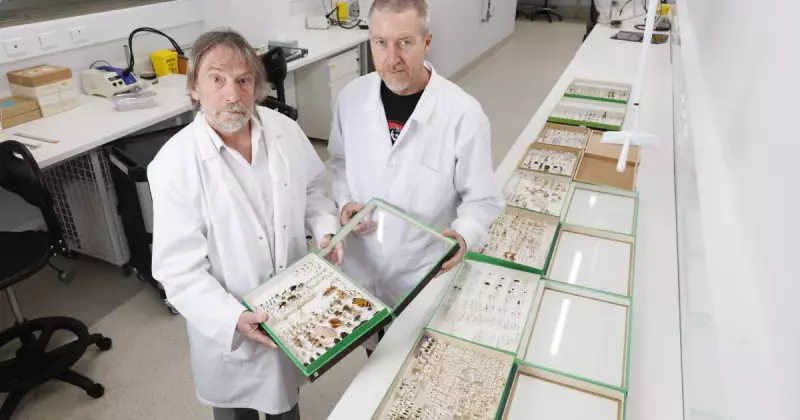
In a significant boost to Australia's biosecurity defences, the CSIRO has welcomed an unusual delivery to its Black Mountain campus in Canberra: 15,000 carefully preserved insect specimens from its laboratory in France.
This extensive collection, gathered over five decades from across the Mediterranean region, represents a major new resource for protecting Australia's billion-dollar agricultural economy from potentially devastating foreign pests.
A Living Library for Biosecurity
The insects, ranging from fearsome beetles to delicate butterflies, arrived in hundreds of cases and are now being catalogued at CSIRO's new "Diversity Building". According to CSIRO scientist Mike Hodda, this collection serves as a critical reference library.
"We've brought them here so we can better identify these exotic insects should they arrive here or be intercepted here," Dr Hodda explained. "It will improve our biosecurity by letting biosecurity officers identify these more easily. It's a kind of a database."
The specimens originate not just from France but from various Mediterranean countries including Greece, Israel and nations across North Africa. This regional focus is crucial because many insects from this area could pose serious threats to Australian crops and livestock if they were to establish themselves here.
AI Accelerates Insect Identification
Cataloguing such a vast collection would have been an overwhelming task in the past, but new artificial intelligence technology is revolutionising the process. Scientists are using advanced software to automatically interpret and label photographed specimens.
"We're actually using AI to interpret labels that have been photographed," said CSIRO scientist Graham Teakle. "There is some new software that's been developed, and we're one of the early trials using it."
Despite this technological assistance, the work remains substantial. Dr Teakle noted he's been employed specifically for this task, expecting it to take approximately a year to complete the cataloguing of all 15,000 specimens.
Proven Track Record in Pest Prevention
The value of maintaining such international insect collections has already been demonstrated. The CSIRO's French laboratory previously studied the Russian wheat aphid, considered the greatest invertebrate pest threat to Australia's cereal industry.
When this aphid finally reached Australian shores in 2017, agricultural authorities were prepared. Thanks to advance research, resistant strains of wheat had already been developed, preventing what could have been catastrophic damage to the cereal industry.
The French facility has also contributed to Australian agriculture through the Australian National Dung Beetle Program, which ran for thirty years from the 1960s. This program imported forty species of dung beetles that helped clear an estimated eighty million tonnes of cow dung, improving pastures and reducing bushfly populations.
The CSIRO's French centre served as the hub for identification, selection and shipment activities for this successful program, which continues to benefit Australian farming to this day.
This new collection of 15,000 insects represents the latest chapter in CSIRO's ongoing mission to protect Australia's vital agricultural sector through scientific research and international collaboration.





